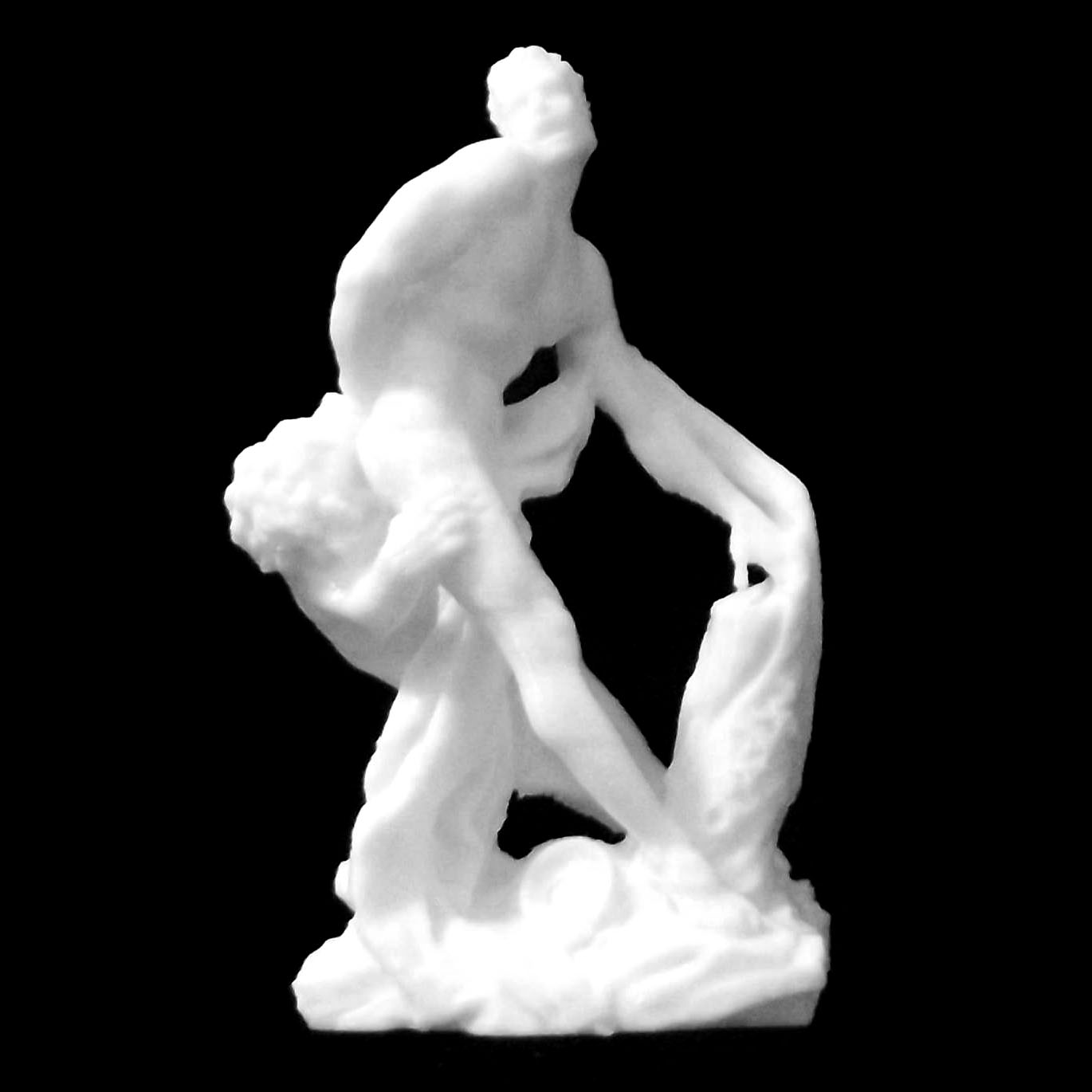
Milon of Croton at The Palace of Versailles, France
myminifactory
Milo was a renowned Greek athlete who had claimed numerous Olympic and Pythian championships. In his advanced age, he sought to prove his vitality by splitting a tree trunk that already had a natural cleft. However, his hand became stuck in the stump, and he was ultimately devoured by wolves. Puget replaced these ferocious animals with a majestic lion, infusing the composition with an intense baroque passion and dramatic flair. Milo's body contorts in agony as his flesh appears to quiver beneath the chisel's touch. Colbert granted Pierre Puget permission to carve three blocks of unused Carrara marble from the port of Toulon. The sculptor, trained in baroque Italy and born in Marseilles, began working on his majestic 'Milo of Croton' in 1671, completing it eight years later. This theme, previously unfamiliar in sculpture, not only explores the triumph of time over strength but also delves into human pride. Milo is defeated primarily by his vanity and refusal to acknowledge the weakness that accompanies aging. His suffering is both physical and moral. Puget's selection of this subject for a piece intended for the king raises an intriguing question. He would later demonstrate similar audacity with his bas-relief of Alexander and Diogenes, also housed in the Louvre. Although each side of the sculpture exhibits equal virtuosity, Puget inclined towards the frontal angle. The work is designed to be viewed either directly or from a three-quarter perspective. Milo's contorted body forms an immense zigzag, consisting of three diminishing diagonals culminating in his head thrown back in a cry of anguish. The body arches against the tree trunk that serves as the central axis around which the composition rotates. In the center, two substantial openings were carved into the marble to detach Milo's silhouette from the background. This hollowing-out of the base is an uncommon occurrence in sculpture and represents a remarkable technical achievement. Puget undoubtedly drew inspiration from the Hellenistic group of Laokoon, a sculpture owned by the Pope, which epitomized the image of heroic suffering for artists during that era. In this piece, the elderly High Priest of Troy dies a stoic death, strangled by the serpent sent by the gods. However, Puget chose to create a modern work, eschewing the idealized representation of the hero and instead substituting it with a violent expression of anguish. The body here is arched in pain, while the face is reduced to a grimace, and the tensed toes appear to claw the ground. When the sculpture was unveiled at Versailles in 1683, Queen Maria Theresa reportedly exclaimed: "Poor man!" The beautiful cuts of Puget's chisel make us forget that we are gazing at marble. The lion's claws seem to plunge into real flesh. The muscles appear to stretch and the veins to bulge under our eyes. The surface modulations render the impression of shuddering flesh. The sculptor juxtaposed the extremely smooth finish of Milo's body with the rougher appearance of the other elements. The lion's fur is carved with a burin, while the trunk and ground are streaked with a point. Puget thus distinguished the story's three actors – man, beast, and nature – through variations in surface treatment. This object is part of "Scan The World." Scan the World is a non-profit initiative introduced by MyMiniFactory, which aims to create a digital archive of fully 3D printable sculptures, artworks, and landmarks from across the globe for public access. Scan the World is an open-source community effort; if you have interesting items around you and would like to contribute, email stw@myminifactory.com to learn how you can help.
With this file you will be able to print Milon of Croton at The Palace of Versailles, France with your 3D printer. Click on the button and save the file on your computer to work, edit or customize your design. You can also find more 3D designs for printers on Milon of Croton at The Palace of Versailles, France.
